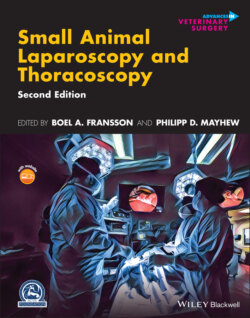Читать книгу Small Animal Laparoscopy and Thoracoscopy - Группа авторов - Страница 80
Insufflators
ОглавлениеA CO2 insufflator is used to create and maintain a working space between the telescope and the target tissues [49, 50]. The insufflator automatically controls CO2 flow rate and pressure throughout the procedure.
The carbon dioxide source is typically a pressurized tank connected to the insufflator with a high‐pressure hose. However, in referral facilities an in‐house gas delivery system may be available. The reduced pressure CO2 gas is delivered to the patient via sterilized tubing that connects from the front panel of the insufflator to the hub of a Veress needle or Luer‐lock connector on a cannula.
An antibacterial sterile filter should be coupled in between the patient insufflation tube and the unit, which prevents contamination from the CO2 tank to the patient or from the patient to the insufflator. The filter also will prevent the entrance of fluid back into the unit thus avoiding permanent damage [1–5, 8,49–51].
Standard veterinary insufflators feature a maximum flow of 20 l/min, since for small animal MIS, it is rarely suggested to use a flow over 2.5 l/min (Figure 3.10a). Nevertheless, advanced models of 40 and 50 l/min are also available, and feature OR integration abilities, thus making possible to control all units from one single station platform. Electronic insufflators with gas heating are available to minimize hypothermia, and generally comprise 50 l/min high flow. (Figure 3.10b) [9].
